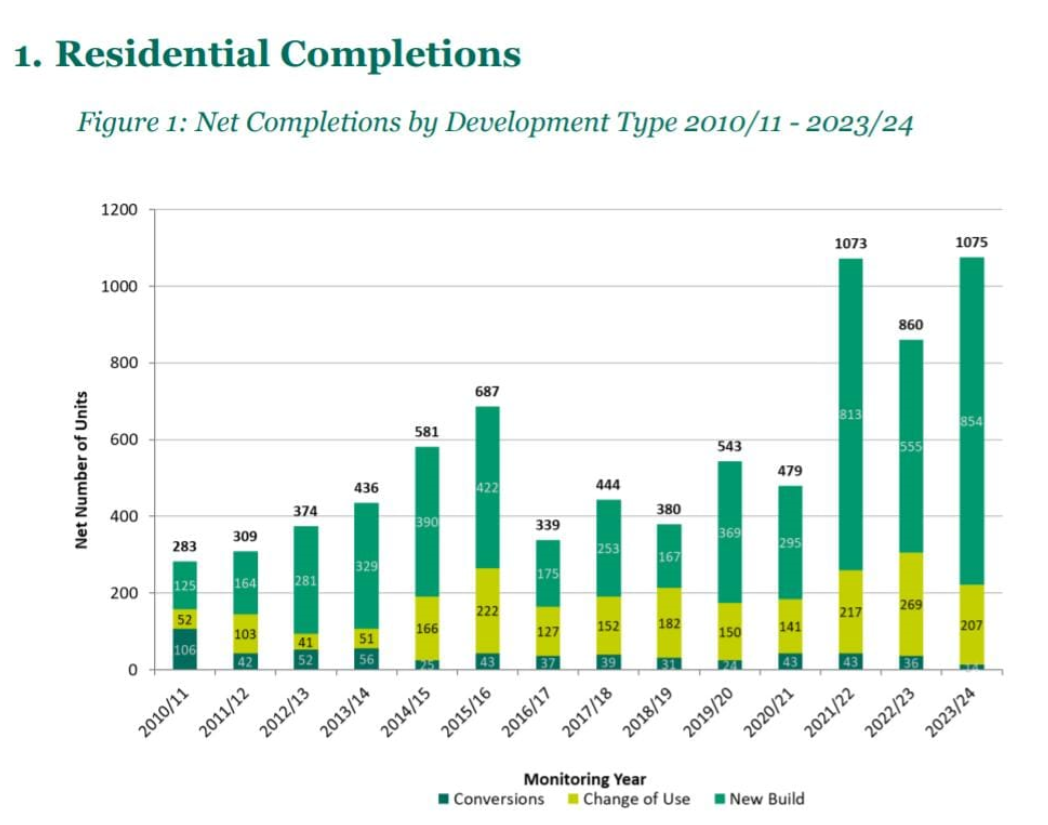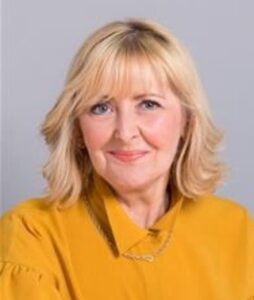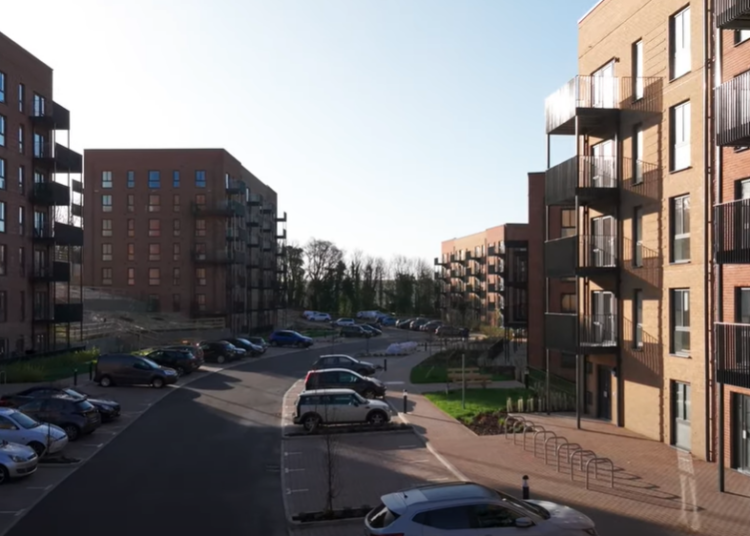Brighton and Hove needs almost 40,000 new homes to be built over the next 15 years, according to a new report.
The figure was estimated using the government’s new standard method for determining minimum housing need which was adopted in December.
The report, by planning consultancy Marrons, said that 37,400 new homes would be required in Brighton and Hove by 2040 – or 2,498 homes a year, an 8 per cent increase on the previous requirement.
In 2023, a strategic housing market assessment for Brighton and Hove, by Iceni Projects, found that new homes were being built at the rate of 513 a year from 2011 to 2021 – just over a fifth of the rate now required.
The highest figure was 1,073 new homes in 2021-22, Iceni Projects said, in an assessment that relied heavily on figures from the Office for National Statistics (ONS).
Since then, housing completions in Brighton and Hove have remained above average – at 860 in 2023 and a new high of 1,075 in 2024 – but still below the daunting 2,500-a-year target.
These include 242 homes in Denman Place, Coldean, pictured above, of which 127 are council homes, part of a joint venture with Hyde housing association to build at least 1,000 truly affordable homes in the area.
Marrons economic director Dan Usher, who specialises in housing need evidence, said: “Brighton and Hove faces a significant challenge in meeting its housing needs due to its geographically constrained administrative boundaries.
“The city simply doesn’t have the space to meet the full demand within its own confines. This means surrounding authorities in the wider housing market area will need to collaborate to help address the shortfall which has been a long-standing issue.
“The recent devolution announcement, which includes the creation of a Brighton and Sussex area, could play a crucial role in addressing the housing needs.

“By adopting greater co-operation between local authorities, we can better tackle the unmet housing demands that have long been a barrier to delivering sufficient homes.
“Without this cross-boundary collaboration, the challenge will continue to grow as the region’s population expands.”
Marrons socio-economic research experts analysed the latest ONS Census data from 2021 as well as population projections from 2018 to forecast housing needs in 2040.
They also looked at council housing registers, affordable housing stock records and extrapolated housing requirement figures using the government’s newly adopted standard method.
The population of the south east is projected to increase by 7 per cent to almost 8.2 million over the next 15 years. A shortfall in building new homes would fuel high property prices and rents even more.
In the same period, Brighton and Hove is forecast to have the biggest increase in demand from first-time buyers – 17 per cent – driven in part by university students saying after they graduate.
Mr Usher added: “Already, England has been named as the most difficult place to find a home in the developed world and our ageing population and rising property prices will only exacerbate the problem.
“If we are going to meet the requirements of the population in 2040, we need to prioritise future residents and start building the right homes today.”
Brighton and Hove City Council deputy leader Gill Williams said: “We know we have a huge housing crisis in the country which is particularly acute in this city.
“It has a huge impact on families and residents – and we are laser-focused on tackling it.”

Councillor Williams, the cabinet member for housing and new homes, added: “That’s why it’s so important we build new housing in Brighton and Hove, in particular, social and affordable properties.
“I’m really pleased that the city has delivered the highest number of new homes in well over a decade.”









Action on Empty Homes website says: “There are nearly 700,000 homes in England that are unfurnished and standing empty. Over 265,000 of these are classed as ‘long-term empty’. When we add in holiday short-lets and second homes, total vacancy sits at over 1 million homes, meaning that across England, 1 in every 25 homes is empty.”
ONS : “In 2021, the majority of households in England and in Wales had more bedrooms than required according to the Bedroom Standard, and therefore were living in under-occupied accommodation (68.8% in England, 76.3% in Wales).”
Resolve these two issues and our requirement for new homes diminishes rapidly.
Given the lack of skilled labour in the house building sector and the lack of available land (we already have a higher population density than some London boroughs) means that the 40k requirement is unlikely to be met.
Really powerful stats there, and to add to that, specifically in East Brighton, we have 4,500 AirBnB properties, with an average of 60% occupation rate, which adds up to several hundred YEARS of empty property time.
This particular aspect really highlights to me the need to control the number and density of AirBnB properties. It’s something that devolution will help with.
New builds are not working as lots of them not lived in probably bought by foreign buyers to get money into the UK. Even older buildings lie empty you just have to look up at blocks of flats to see how few lights are on in the evening. Even near me on Hove seafront lots of the flats are not permently lived in.
In the lake district it was a problem as it was killing villages of as not enough pupils for schools etc so you now have to have a local connection to buy a property.
We need principle residency legislation to prevent new builds from being sold as holiday or investment properties.
You have a good point l. Grand avenue has tons of derelict buildings owned by a certain criminal. The council should issue compulsory purchase orders on everything he owns down that way
Ah yes, I’ve heard of that guy. I agree with using CPOs, it’s an power available to free up limited housing stock, so absolutely should use it, at the very least it will encourage owners to make use of their properties.
Why? The birth rate is nosediving.
Our current population is not being catered for, and also the increase in people entering the city are some of the stronger factors here.
Interestingly, birthrate has a significant impact on school requirements more than housing.
Fewer incomers leaving London or buying 2nd holiday homes is what is REALLY needed
Agreed on holiday homes. Principle housing legalisation is the solution.
Just build a new estate between falmer and woodingdean. Transport links are already there, maybe add another bus route. Beavingdean has a school that’s under subscribed. Currently it’s just farm land and a camp site. The city desperately needs family housing so a clause could be put in to the freehold agreements saying no HMOs. May annoy a few dog walkers but really is needed. Could easily add 15000 homes in that space
It’s a good shout. We can’t be too picky with the number of limitations in the city’s geography.
It’s a non-starter. Thank goodness. It’s in the South Downs National Park. It won’t be built on.
HMOs provide a lot of housing for young professionals who cannot afford to get on the property ladder. Plus increasingly older people who’ve lost most of their assets in a divorce, bankruptcy or other misfortune who’ve fallen off the property ladder.
Ban HMO’s and you penalise a LOT of renters who are not students.
Mike I’m afraid you’re wrong in your second statement. According to Mark (Fry) everyone over sixty is enormously rich, owns at least two six bedroom houses and refuses to die early to accommodate the desires of younger people…
Stop new people coming here. Kick out those new people who are not employed. Housing problem sorted.
That comment is stupid because it completely misunderstands the root causes of the housing crisis and promotes an unworkable, exclusionary, and legally dubious “solution.”
Firstly, the housing shortage isn’t caused by an influx of unemployed people. The primary drivers are a lack of affordable housing, speculative property investment, restrictive planning laws, and a high demand for homes in a desirable coastal city. Simply banning “new people” from moving in or expelling the unemployed is both practically and legally impossible, not to mention ethically abhorrent.
Secondly, many unemployed people aren’t jobless by choice—illness, disability, redundancy, or temporary economic downturns all play a role. Brighton also has a large student population and seasonal workers, many of whom are in and out of employment. Should they all be “kicked out” too?
Lastly, the city’s economy relies on migration. Key sectors like hospitality, healthcare, and education depend on workers coming in from outside. Blocking new residents would only worsen skill shortages and economic stagnation, making housing problems worse, not better.
In short, it’s a simplistic, reactionary take that ignores economic realities, legal constraints, and basic human decency.
There’s plenty of property up for sale in Brighton and Hove. What’s the problem?
Sellers who think it’s still 2021
Well, the cost principally.
I think it is important for us to be honest about the price of the new builds which are being put up all around the city and which are in planning and proposal stages. Building an extra 2000 homes is really not much to be proud of because the people who benefit the most are the developers. They are already extremely rich and getting richer all the time I imagine. Which first time buyers can afford to buy flats priced at £600k or £700k? There are actually almost 1500 flats on the market in Brighton and Hove, but few are affordable, even the new builds! Some of the proposed new builds are very small, lacking in wheelchair access, not sustainable, lacking in natural light, and even fail on their own biodiversity report. Rentals are utterly unaffordable. I am extremely doubtful that any of the new builds we see in Hove will be let at affordable prices. What do we consider affordable? £1500pcm – £2000? That is a typical rental fee for a flat in Hove and I don’t think that is affordable at all. Additionally, has the necessary infrastructure been put in place (doctors, dentists, schools etc)? Building extremely expensive blocks of flats in the most expensive areas of the country doesn’t seem the best way to solve the housing crisis.